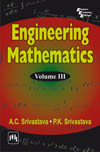ISBN: 9781259001567
Pages: 960
Price: Rs.495/-
Authors:
Behrouz A Forouzan, DeAnza College
Firouz Mosharraf, Rio Hondo College
Salient Features
- Top-Down Approach: This book approaches how application-layer protocol exchange messages before learning how these messages are actually broken into bits and signals and physically carried through the internet
- Visual Approach: The book presents highly technical subject matter without complex formulas by using a balance of text and figures
- Simulation Experiments demonstrate network concepts and packet flow. Each hipster includes Java applets and lab assignments that mirror examples in the text
Table of Contents
1. Introduction
2. Application Layer
3. Transport Layer
4. Network Layer
5. Data Link Layer and Wire Networks
6. Wireless Networks and Mobile IP
7. Physical Layer and Transmission Media
8. Multimedia
9. Network Management
10. Network Security
11. Socket-Interface Programming in Java
Please find attached letter of same.
Thanks &
Best Regards,
Maunish H Pandya
Sr. Territory Sales Manager,
Science, Engineering and Math’s Division,
Tata McGraw-Hill Education Pvt.Ltd,
Ahmedabad
Gujarat
Mob.No:-9998722971



